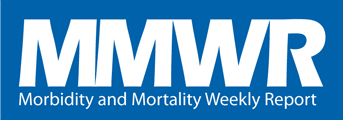MMWR News Synopsis for October 9, 2014
Alcohol Involvement in Opioid Pain Reliever and Benzodiazepine Drug Abuse-Related Emergency Department Visits and Deaths — United States, 2010
Jeff Ventura
Food and Drug Administration
301-796-7567
Jeff.ventura@fda.hhs.gov
The combined use of alcohol with opioid pain relievers or benzodiazepines is dangerous and relatively common. Providers should educate their patients about this risk and screen patients to identify and intervene early in patients with problematic substance use. Opioid pain relievers (OPR) and benzodiazepines are the prescription drugs most commonly involved in overdose deaths and emergency department visits. When these drugs are combined with alcohol, the risk for overdose increases. However, data describing alcohol involvement in OPR or benzodiazepine abuse are limited. Using 2010 data from the Drug Abuse Warning Network, FDA and CDC found that alcohol was involved in 18.5% of OPR and 27.2% of benzodiazepine drug abuse-related ED visits and 22.1% of OPR and 21.4% of benzodiazepine drug-related deaths. These findings indicate alcohol plays a significant role in the public health burden of OPR and benzodiazepine abuse. Interventions to educate providers and the public about the dangers of combining these substances need to be strengthened. Interventions that address problematic alcohol and drug use could be enhanced throughout the primary health care system.
Hispanics or Latinos Living with Diagnosed HIV: Progress Along the Continuum of HIV Care — United States, 2010
NCHHSTP Media Team
404.639.8895
NCHHSTPMediaTeam@cdc.gov
A new CDC analysis finds that just over half of Latinos diagnosed with HIV are not receiving care and treatment for their infection. HIV treatment can suppress the amount of virus in the body to a level low enough to dramatically improve a person’s own health and greatly reduce their risk of transmitting to others, yet only 37% of Latinos with HIV have achieved viral suppression. Using data from CDC’s National HIV Surveillance System and Medical Monitoring Project to determine the proportion of Latinos diagnosed with HIV who were engaged at each stage of care in the U.S. in 2010, researchers found across-the-board gaps in important markers of care. Overall, 80% were linked to care within three months of diagnosis, but only 54% were retained in care. Fewer than half of Latinos diagnosed with HIV were prescribed treatment (44%) and only 37% achieved viral suppression. Percentages of linkage to and retention in care were similar across all age groups; however, differences were found across age groups for viral suppression. U.S. clinical guidelines now recommend that everyone with HIV begin therapy upon diagnosis. However, several factors can influence linkage, retention, or adherence to care and treatment including lack of access, language barriers, migration patterns and geographic differences. In conclusion, the authors note that increasing the proportion of Latinos living with HIV who are receiving care is critical to improving their health and decreasing rates of new infections.
###

